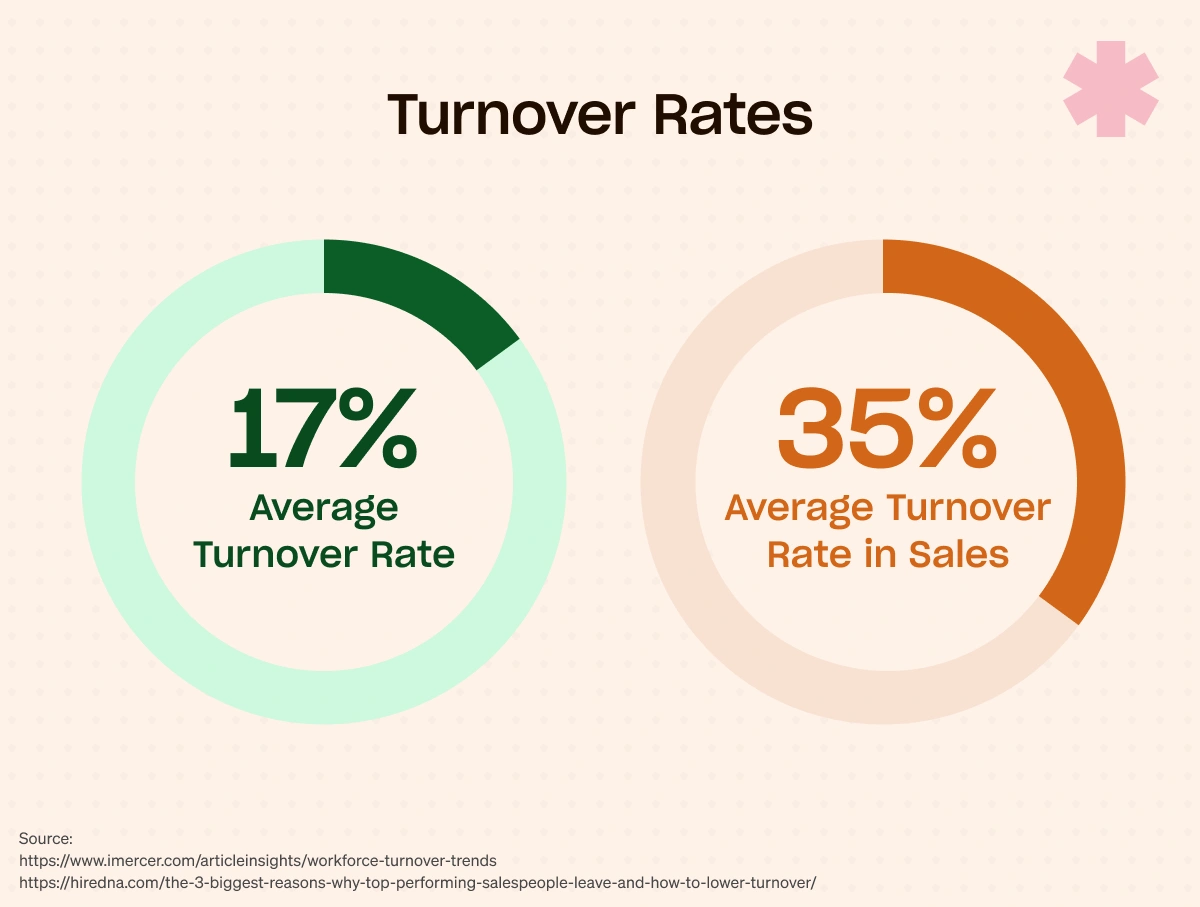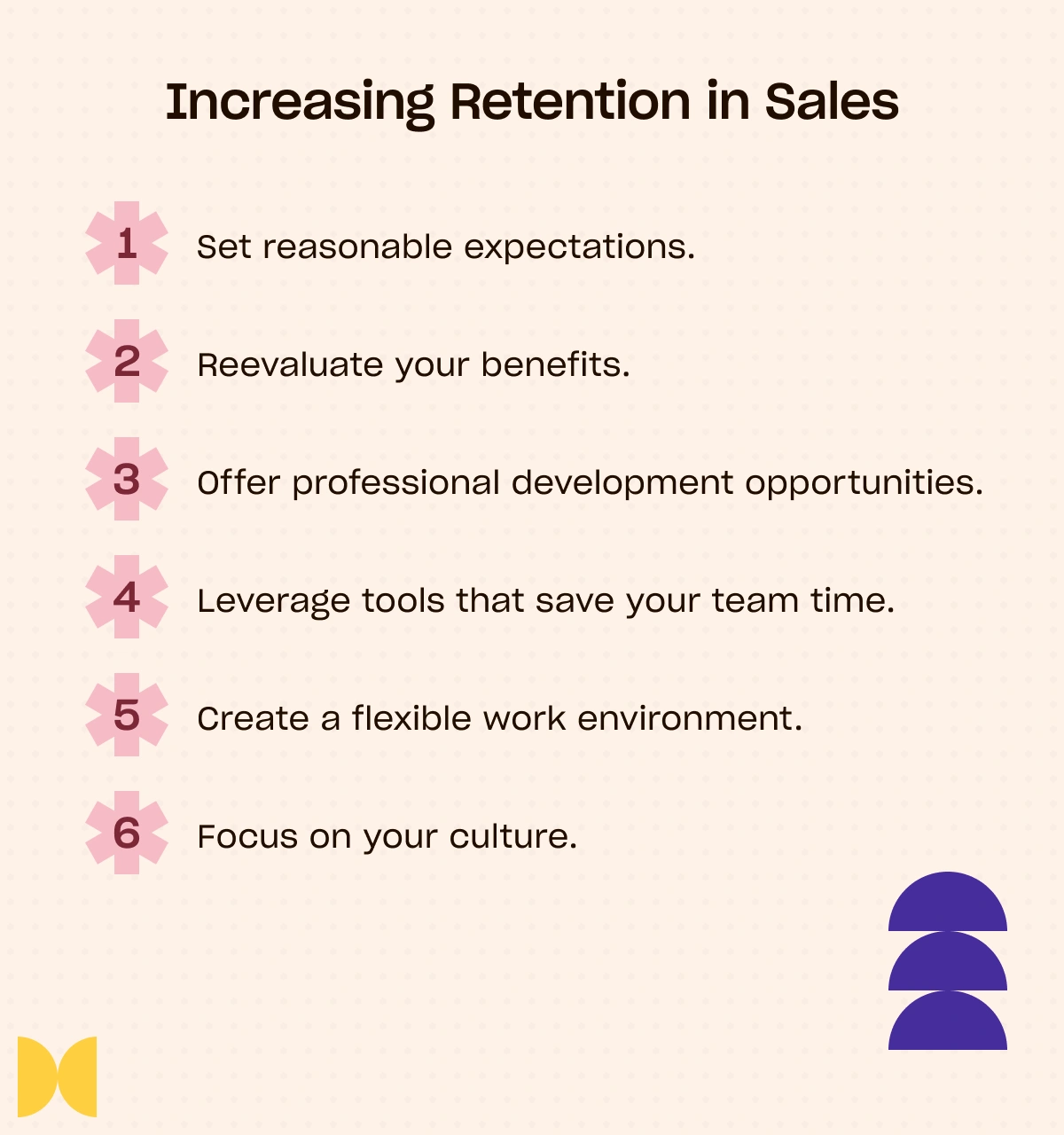How HubSpot Trains and Retains the Best Sellers in SaaS
HubSpot Sales is the driving force behind the fastest-growing, most widely adopted tool in SaaS. Here are their insider sales strategies for training and retaining award-willing sellers from ground zero to maintain robust sales efficiency and profitability.
7 Minute Read
Written by The Apollo Team
Published Friday, October 20, 2023
Few things are more crucial to a sales team’s success than ramp rate.
The quicker new hires get to full quota, the faster they’ll stop gobbling up time and money that could be better spent on building pipelines and closing deals.
In Part 2 of Inside Sales at HubSpot, we again draw on the wisdom and experience Elanna Lalezari, Tara DiCristo-Schmitt, Katie Walsh, and Kelsey McKay—award-winning sellers and sales leaders who've helped HubSpot become the #1 fastest-growing product in SaaS.
Here's what they have to say on ramping new reps, what sales enablement tools are the best, how the best leaders run their teams, and tips for retaining top sellers.
If you haven't yet, read Inside Sales at HubSpot Pt. 1 here.
Ramping up as a HubSpot seller
HubSpot’s sales leaders work hard at reducing ramp time, because they know that long ramp times drag on both productivity and profits.
“The ramp timetable has changed over the years,” says Walsh, HubSpot’s Director of Sales. “But there is a period of time where you get to ramp and have a [lower] quota as you’re kind of working through and developing your skills.”
As that quota increases over time, it can become intimidating.
That’s why HubSpot provides ongoing training throughout the process, so its reps never ramp alone.
“Right off the bat, I felt like I was wearing that HubSpot jersey and that we were better than all of our competitors…when you really believe that, it’s easy to sell because you’re selling something to people that’s better than what they’re already using,” says Walsh, who achieved HubSpot’s elite Founder’s Club status after only 12 months on the job.
That’s a million bucks in sales.
Right off the bat, I felt like I was wearing that HubSpot jersey, that we were better than all of our competitors.
Katie Walsh
Director of Sales at HubSpot
Human know-how plays a big role, too.
“We’re constantly learning from our marketing team,” says McKay, a mid-market AE. “We do lots of training with our sales engineers and the opportunities to self-educate are plentiful with our own HubSpot Academy knowledge base.”
Even with access to the best resources, selling can be a rough sport—at HubSpot or anywhere else.
Which is a big reason why the RAM (Ramp Acceleration Managers) program was created—to give remote newbies the support and business acumen they need to become the best in the biz.
Instead of going straight to market enablement onboarding, Elanna Lalezari, Director of Corporate Sales and head of HubSpot’s RAM training program says, they now get a hands-on (virtually speaking) manager to guide them through the first six months.
It’s the online equivalent of having an in-person coach.
“Tara [VP of SMB Sales] brought that to HubSpot, and then we grew it,” Lalezari says. “And it’s been really exciting. We were trying to find a way to make sure our new hires have the best shot and can learn everything as fast as possible.”
First, because ramping a distributed remote workforce is infeasible.
And also because most reps, especially inexperienced ones, fare poorly on their own without a trusted advisor to check on their progress and help them avoid—or pull out of—inevitable slumps.
HubSpot managers lead to inspire
Great managers, like the one Lalezari mentioned, are among HubSpot’s most valuable resources.
“Masterful leaders bring the energy,” says DiCristo-Schmitt. “They’re the spark that ignites self-belief and action in people.”
"The difference between an exceptional leader and a mediocre one", she adds, “is [the ability] to connect with people at the highest levels, and then connect them to the company’s overall vision and decision-making [process].”
The difference between an exceptional leader and a mediocre one is the ability to connect with people, at the highest level, to the company's overall vision.
Tara DiCristo-Schmitt
VP of SMB Sales at HubSpot
In doing so, Lalezari tries to “simplify everything and make it really clear.” One example is a Monday email she sends to her managers. It includes both status updates and reminders for the week.
“A successful sales org is remembering that we’re human,” she says, “Sometimes we assume that people are going to be able to connect the dots, but there’s no reason we can’t just give them the map so they don’t have to do that.”
Great leaders, she says, bring “clarity and simplicity to complexity” to any project, process, or initiative.
“First and foremost, we’re people leaders,” Katie Walsh says. “I’m a people leader. I have a responsibility to the company, but I also have a responsibility to care about all the people in my organization, as human beings, so I can maximize the output I’m getting from them to ultimately hit that sales target.”
It’s a transactional take, but here’s the thing: Sales is transactional.
Caring and selling aren’t mutually exclusive. In fact, they complement each other. People who feel valued and supported are far more empowered, and emboldened, to succeed.
“Companies that don’t have a leadership team that cares about the people who are doing the dirty work, so to speak, won’t be as successful,” Walsh says. “I’d run through walls for [my co-workers] because I think they’re great humans and really amazing business leaders.”
McKay echoes the same sentiments, “The leadership team seeks to understand things from my perspective and has been a resource to help me upskill in different areas. And they lead by example. Some of my best sales managers at HubSpot sold the product.”
Retaining Stellar Sellers
This challenge isn’t unique to sales. Plenty of companies, particularly in tech, regularly lose their best and brightest to greener pastures.
Which isn’t surprising; who wouldn’t pass up the opportunity to make more cash?
Among sales reps, the answer is very few. That’s part of why the average turnover rate in sales is 35 percent when it should be around 10.
But it’s in a company’s best interest to keep their top performers from defecting. And it’s not only a matter of money.
HubSpot’s approach boils down to this: creating an environment that reps don’t want to leave. And, of course, making sure they’re well compensated.
That first one, though, is central. Toxic cultures, lack of growth potential, weak leadership, and impossible-to-hit sales targets are the main reasons reps jump ship. If they’re reps who consistently obliterate quota, that’s a huge blow to both the team and the company. Financially, of course, but it’s also bad for morale.
It seems appropriate here to extract insight from a HubSpot blog post on the subject.
Retaining reps, it explains, requires a detailed plan that sets reasonable expectations, reevaluates employee benefits, offers more (or better) professional development opportunities, leverages the best time-saving tech tools, creates a flexible work environment, and focuses on culture.
Make sure to track your progress on all of these fronts.
For DiCristo-Schmitt, retention is all about communication, recognition, connection — including bringing her team together in person whenever possible — and staying out of the way.
“They crave the recognition. They crave the learning. They crave you seeing them. And often, managers have less tenure than some of their reps, so I'm hands-off. I'm gonna let them do their thing. I don't wanna mess anything up.”
During her HubSpot career, McKay says, “I’ve had great support from my leadership team in pursuing a path that leads me to management. And it’s a lot easier to sell a product you truly believe in.
“So it’s like, Why leave?”
About the authors
Tara DiCristo-Schmitt, VP of SMB Sales at HubSpot
Tara is a tenured sales leader of 20+ years, leading sales teams at high-growth companies with a contagious energy. At HubSpot, she’s responsible for helping develop high-velocity strategies for global sales and building and leading the SMB sales team across North America.
Elanna Lalezari, Director of Corporate Sales at HubSpot
Elanna Lalezari is the Director of Corporate Sales at HubSpot. Over her 6 years at the company, she’s earned 6x President's Club honors and now leads a team of corporate sales managers and ramp acceleration managers with thoughtful enablement, data-driven sales motions, and a coaching mentality.
Katie Walsh, Director of Sales at HubSpot
Katie Walsh is a 10-year HubSpot veteran and a people-first Sales Director. She started at HubSpot as a BDR and instantly fell in love with the company’s mission, vision, and product. She climbed her way through the ranks and, today, she spends her days proactively identifying problems, creating solutions, and actively coaching her team of sellers to success.
Kelsey MacKay, Mid-Market AE at HubSpot
Kelsey MacKay is a 4-time President's Club winner and one of HubSpot's top ICs. In her 6 years at HubSpot, she's earned 10 promotions (most recently to Mid-Market Sales Manager!) and driven hundreds of thousands of ARR with her consultative sales approach and utter dedication to the customer.
Related articles
Subscribe for weekly updates
Receive insider stories and data-backed insights for elevating your work and staying ahead of the curve
You can unsubscribe at any time using the link in our emails. For more details, review our privacy policy.

